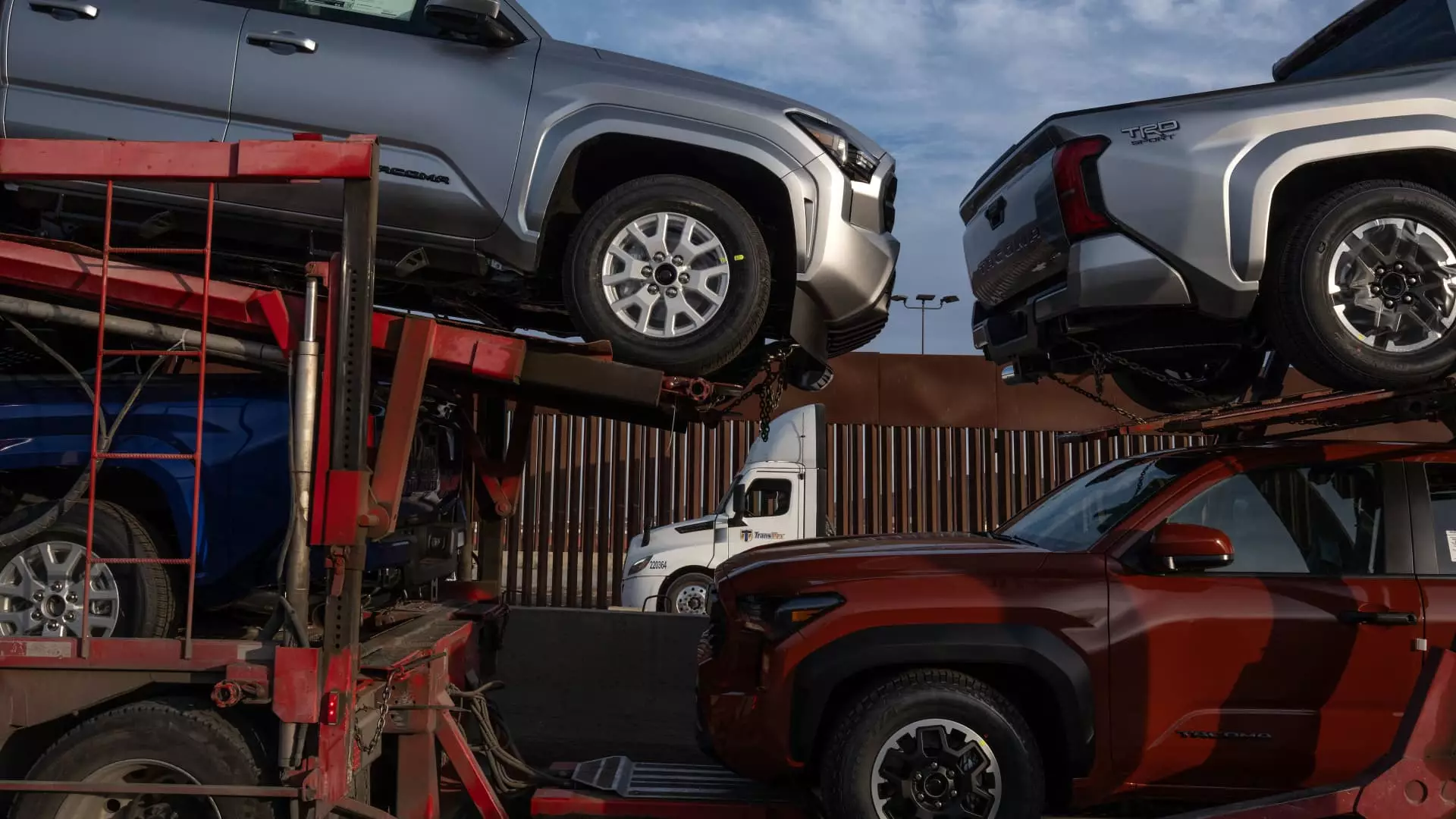As the looming specter of a 25% tariff on imports from Canada and Mexico threatens the global automotive sector, the industry is bracing for potentially severe repercussions. President Trump’s negotiations and evident determination to reshape trade relations with key North American partners have led many automakers to adopt a cautious “wait-and-see” stance. The uncertainty surrounding these tariffs has injected a level of anxiety into an industry that thrives on predictability and stability.
Tariffs, essentially taxes on imported goods, are meant to protect domestic industries from foreign competition by raising the price of imported products. In this case, the automotive industry faces significant challenges, as many companies rely on a complex network of suppliers spread across North America, particularly in Mexico and Canada. Should the tariffs be enacted, automakers, particularly giants like General Motors (GM) and Ford, might find themselves squeezed by increased costs that could ultimately be passed down to consumers, raising vehicle prices and potentially dampening demand.
The ripple effects of these policies could be extensive. According to S&P Global Mobility, no major automaker would remain unscathed by such tariffs, with cost estimates reflecting how dramatically a 25% duty could inflate the price of a vehicle. For instance, a $25,000 vehicle could see its price increase by $6,250, unavoidably impacting consumer behavior. This would likely lead to a decrease in vehicle sales, affecting everything from production schedules to profit margins.
Amid this uncertainty, GM has exhibited some vulnerability, as demonstrated by a recent stock drop even after reporting fourth-quarter results that surpassed Wall Street expectations. The mixed messaging about future earnings prospects, especially in the context of potential tariffs, raises questions among investors. As GM’s CFO Paul Jacobson noted, the lack of concrete guidance on tariffs has forced the company into a cautionary stance. He emphasized that there is an overwhelming “noise” surrounding the market, with external factors like wildfires and political upheaval further compounding the uncertainty.
Analysts like Dan Levy from Barclays suggest that while GM has robust contingency plans, the persistent questions surrounding U.S. policy make it difficult for investors to form a stable outlook. They urge the company to adapt its strategies based on the evolving trade landscape, yet the variables at play remain unpredictable.
The U.S., Mexico, and Canada are a tightly interwoven fabric when it comes to auto manufacturing. For example, nearly half of all auto parts utilized by manufacturers in the U.S. come from Mexico. Conversely, Mexico relies heavily on U.S. exports for vehicle parts, further underscoring the interdependence of these economies. The automotive industry’s reliance on cross-border trade means that any alterations to tariff policies could have far-reaching consequences.
Reports indicate that five major automakers produce around 5.3 million vehicles in plants across Canada and Mexico, with roughly 70% earmarked for the U.S. This statistic underscores how contingencies associated with tariff implementation could disrupt not just sales but also production planning.
Given the distribution of U.S. sales across manufacturing locations, some automakers face greater risks than others regarding potential tariffs. German automaker Volkswagen finds itself at the forefront of this risk, as 43% of its U.S. sales derive from Mexico. Others, such as Nissan and Stellantis, follow closely, with substantial percentages of their sales produced south of the American border. This disparity highlights the diverse vulnerabilities within the industry and compels automakers to reassess their geographic strategies in light of the evolving policy landscape.
As Antonio Filosa, head of Stellantis North American operations, noted, automakers are preparing scenarios for various outcomes. However, until the government solidifies its stance, planning remains tentative.
The cloud of uncertainty hanging over the automotive industry as a result of potential tariffs presents both challenges and opportunities. While the immediate threat of increased costs and diminished consumer demand looms large, automakers must remain agile, adapting to shifting conditions. The resilience of the North American automotive sector will depend on its ability to manage these risks effectively while continuing to provide value to consumers. In a rapidly changing global landscape, the path forward is fraught with challenges, but it is also ripe with the potential for strategic innovation and adaptation. The automotive industry stands at a pivotal moment, and how it navigates this storm will shape its future in the years to come.

